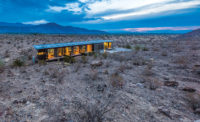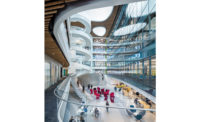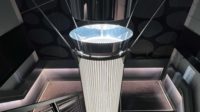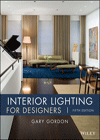
|
|
Photo © David Sundberg/Esto
|
| The New York Times Building, completed in 2007, includes several energysaving systems that were then considered innovative. The tower was recently the subject of a detailed post-occupancy evaluation. |
New York City and Sacramento
Lighting accounted for 20 percent of the primary energy use in commercial buildings in 2010—more than either heating or cooling, according to the U.S. Department of Energy. So deploying strategies like daylighting, automated shading, and advanced controls presents an ideal opportunity for achieving energy savings. The projects in this section—a law school, an art museum, and a research laboratory—demonstrate that these technologies are being deployed with increasing frequency. But just how well do buildings with such systems perform? Rarely are they evaluated after occupancy, due in part to lack of funds and liability concerns.
One exception is the New York Times Building in Midtown Manhattan. The 52-story tower, designed by Renzo Piano Building Workshop with FXFOWLE, has a veil of fixed 3-inch-diameter ceramic tubes cloaking its glass skin. The newspaper's offices include dynamic shades, lighting that dims on the basis of available daylight, and other technologies that were far from mainstream in 2007, when the building was completed, such as under-floor air. Earlier this year, the Lawrence Berkeley National Laboratory (LBNL) published the results of a monitored evaluation of these systems conducted in 2011 and 2012.
While the tower's owners opted not to go for a LEED rating, its performance is impressive. According to the study, in the tower's daylit zones, annual lighting energy use was 56 percent less than for a typical code-compliant building. Annual electricity savings for a typical floor was 24 percent from dimmable lighting, dynamic shades, and under-floor air. The report calculated an 8-year payback for the systems. It also found that employees were largely pleased: out of 665 respondents to an occupant survey, 78 percent were satisfied with the lighting quality.
Before construction, the Times built a full-scale 4,300-square-foot mockup of one building corner to test daylighting technologies. Stephen Selkowitz, senior advisor for building science at LBNL, points to this mockup, and to requirements that suppliers demonstrate compliance with performance targets, along with a solid commissioning plan, as some reasons for the project's success.
Regardless of whether practices such as full-scale mockups become typical, technologies like those deployed at the Times will likely become more common as codes grow more stringent. For example, in its 2010 version, the energy standard ASHRAE 90.1 for the first time required daylight-harvesting controls. And although previous iterations of 90.1 included requirements for occupancy sensors or timers in certain spaces, the latest version has new mandatory applications. The next update, due this fall, will require such devices in all spaces where they are practical, says Eric Richman, chair of the 90.1 development team's lighting subcommittee.
The voluntary standard LEED arguably influences technology adoption as much as codes do. LEED v4, the version of the rating system that U.S. Green Building Council (USGBC) members approved in July, includes updates concerning lighting, daylighting, and controls. But not all of the changes are focused on energy. Once the new LEED launches, project teams will be able to earn a point for lighting quality if they select, for instance, fixtures that don't create glare, finishes with good reflectance, and long-life lamps. “If you change lamps infrequently, the design is more likely to remain intact,” says Matt Latchford, a senior associate at Cambridge, Massachusetts, lighting design firm Lam Partners and a member of the USGBC committee charged with developing the LEED credits relating to indoor environmental quality.
Mitigating glare was a lighting-quality issue critical in the design of Sacramento International Airport's highly transparent Terminal B, a LEED Silver'certified, two-building facility by Corgan in association with Fentress Architects that opened in 2011. Tapped midway through the design phase, the Arup lighting team worked closely with the architects to develop a simple, integrated-daylight and installed-lighting scheme. The central terminal relies on precisely engineered, perforated louvers along south, east, and west glazed facades to control sunlight. Because the client required a low-maintenance system, non-dimmable T6 ceramic metal-halide lamps are triggered by dawn and dusk to go off or on. The airside building—defined by an arched, tiered ceiling with discreet dimmable fluorescent tubes—has a glazed northern exposure that provides an even wall of daylight, minimizing the need for numerous photosensors.
New technology offers aesthetic as well as operational benefits in Behnisch Architekten's law center at the University of Baltimore, where functional concerns prompted the client to choose LEDs for almost all of the lighting. But for MCLA, the project's lighting consultant, there was another lure. “What's exciting about this use of LEDs,” says Maureen Moran, MCLA principal, “is that the light source and its shape are driving the fixtures' design.”
Sophisticated technologies, deployed as part of a well-conceived lighting and daylighting scheme, can also enrich the user experience, as they do at David Chipperfield's addition to the Saint Louis Art Museum. Here the galleries' highly engineered coffered ceiling integrates skylights, automated shading, and electric light to create the best conditions for viewing art. And at the Energy Biosciences Building at the University of California, Berkeley, a dramatically illuminated stair dims when bright sun shines through a skylight. The stair, encouraging scientists from different disciplines to interact, acts as a social magnet.
Projects like these demonstrate that innovative building systems can do more than conserve energy—a point reinforced by the Times tower, where 61 percent of respondents to the occupant survey said that the building enhanced their ability get their jobs done. For LBNL's Selkowitz, the design and construction industry's ultimate goal is to reach the point where realizing buildings with integrated advanced systems is more routine. “The end result,” he says, “will be energy efficiency and happy occupants.”
People |
Products |







